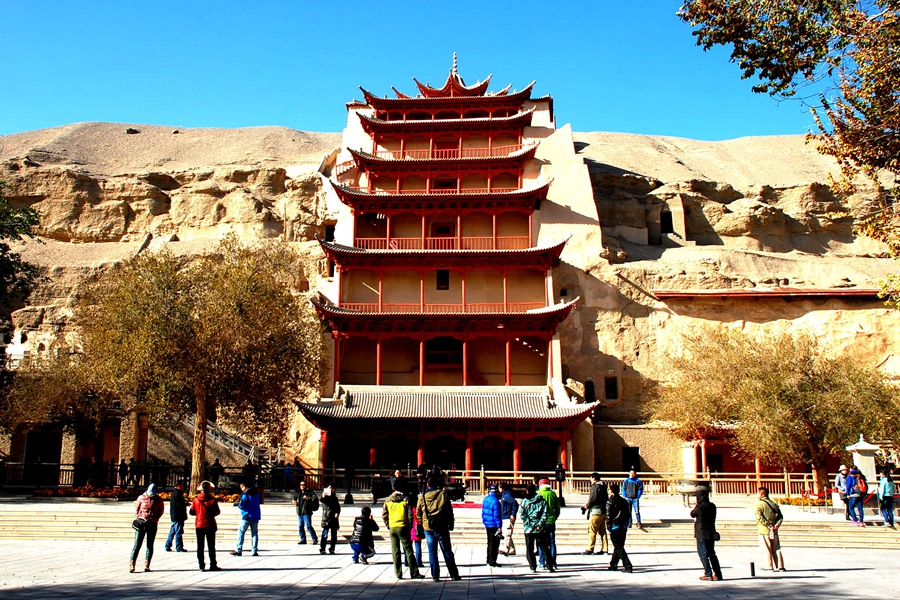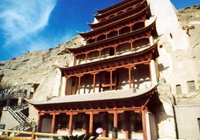Mogao Grottoes
 0 Comment(s)
0 Comment(s) Print
Print E-mail China.org.cn, August 11, 2016
E-mail China.org.cn, August 11, 2016

[Photo by Zhang Xiaoliang]
Mogao Grottoes (莫高窟) is a UNESCO World Heritage Site filled with exquisite Buddhist art and Manuscripts. Situated at a strategic point along the Silk Road, at the crossroads of trade as well as religious, cultural and intellectual influences, the 492 cells and cave sanctuaries in Mogao are famous for their statues and well paintings, spanning 1,000 years of Buddhist art.
The traveler finds the Mogao Grottoes, a shrine of Buddhist art treasures, 25 km (15.5miles) from downtown Dunhuang on the eastern slope of Mingsha Shan (Mount Echoing Sand). A network of plank reinforced roads plying north to south 1600 meters (5, 249 feet) long lead to the cave openings, which are stacked five stories high some reaching up to 50 meters (164 feet). By the way, Mogao means high up in the desert.
According to Tang Dynasty records, a monk had witnessed onsite a vision of thousand Buddhas under showers of golden rays. Thus inspired, he started the caves construction work that spanned ten dynasties. Mogao Caves are commonly known as the Caves of a Thousand Buddhas.
Buddhist art has its origins in India. Mogao sculptors improvised where the rock surface did not work well under their chisels. They placed clay statues in front of the cave walls, carved relief murals as backdrops, and painted the sidewalls and ceilings with art decors. The largest statue is 34.5 meters (113 feet) high and the smallest a mere 2 centimeters (0.79inches) high.
The traveler will note traces of Indian Buddhist art in the earlier works. More recent works depict all walks of life and activities in a local setting. You will relive the daily routines and special events as captured by the artists while you are exploring the 750 caves. There are also ups and downs in the artistic quality over the centuries, depending on the fortunes of Buddhism with available art patronage. Artists in each dynasty painted with their distinctive palette. The visitor can tell the works in the Tang Dynasty from those in the Song Dynasty.
People believe it possible to fill 25 kilometers (15.5miles) of gallery space with the works of art from Mogao. There are 50,000 manuscripts written in many languages apart from artifacts. The Mogao Caves are a depository of historical and cultural exchanges over more than a thousand years between China and other nations.





Go to Forum >>0 Comment(s)